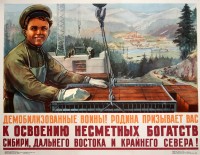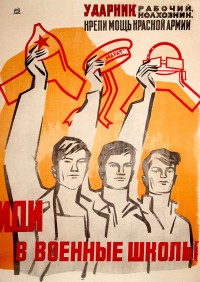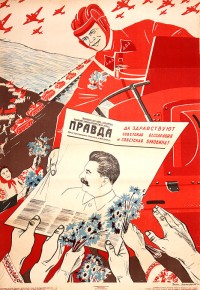Military
In the Soviet Union, the Red Army---after 1946 the Soviet Army---held a commanding place in society and public perception. In 1917, Red Guards, military formations loyal to the Petrograd Soviet of Workers' and Soldiers' Deputies, were comprised of detachments of armed workers who defended the city from counterrevolution. During the Russian Civil War (1918-22), Leon Trotsky's talents for organizing troops forged the Red Army into a formidable fighting force consisting of workers, peasant conscripts, ex-Tsarists, and committed Bolshevik commissars, who oversaw the whole. [Text continues at bottom of page]

Emblematic of the era, the commissar was identified by a dirtied leather jacket, revolver at the ready, muddy boots, and hyper-masculinity. After the final campaigns of the Civil War, the Red Army's strategists spent the 1920s considering the lessons they had learned. In contrast to the static trench warfare characteristic of World War I on the Western Front, the wars in the East were ones of maneuver, a fact encouraging the Red Army to pioneer combined arms doctrines mandating use of mechanized infantry unites and strike forces of massed tanks. However, by the mid-1930s, Mikhail Tukhachevsky and other developers of these tactics, perished in Josef Stalin's purge of the officer corps. Purges continued until the early stages of World War II, leaving inexperienced officers to lead the Red Army in 1940 and 1941.
In the wider conflict that was World War II, the early results did not favor the Red Army. Its attack on much weaker Finland in the 1940 Winter War achieved its objectives, but with great difficulty and considerable losses. Stalin's strategic choices, moreover, left the Red Army vulnerable to the surprise attack on the Soviet Union that Adolf Hitler launched in the early morning hours of June 22, 1941. Reeling from the assault, the Red Army had to recover from the destruction of numerous front-line units, aviation, and other assets. Slowly, the defeats in 1941 and 1942 gave way to decisive yet costly victories, from Stalingrad in early 1943 all the way to the Red Army's final assault on Berlin in May 1945. The jubilation of Victory Day on May 9, 1945, and the days and months that followed soon faded as the grim postwar realities set in.
Victory in World War II provided the Soviet Union with its crowning achievement but it also gave the Soviet Union and the Communist Party a new myth, alongside or even in place of that of the revolution, to legitimize their power. Younger generations were bound to preserve and defend the Soviet Union as the front generation had by defeating the fascists. Victory also brought with it control over eight Eastern and Central European states, as well as the incorporation of new border regions into the Soviet Union, all of which the Soviet Army was to defend.
From the late 1940s to the end of the 1980s, the long struggle of the Cold War continued the tradition of veneration for the Soviet Army in popular images that idealized service members---typically portrayed as men. In addition to the ground troops and tank formations, the armed forces extended to police units, modern aviation, a growing navy, and a collection of nuclear units rivaling those of the United States in size and in strength. Each branch attempted to portray itself positively to the public. The most popular films and television productions featured idealized military figures and epic conflicts with the fascist enemy. The trend was epitomized by Seventeen Moments of Spring, a television serial portraying the fictional adventures of a Soviet agent embedded deep within the Nazi Schutzstaffel, or SS.
By the 1970s, the Soviet Army and the USSR's vast military-industrial complex consumed an inordinate proportion of the USSR's national wealth. No estimate could possibly be precise, but educated guesses suggest that the Soviet Union spent almost as much as the United States, but out of an annual national product less than half as large as that of the rival superpower. It was only when Mikhail Gorbachev took power in 1985 did he come to face the true state of the economy and scale of military expenditures. He thus embarked on a revolution in foreign policy that helped bring about the peaceful resolution of the Cold War, the withdrawal of Soviet troops from their ill-fated Afghanistan campaign, the abandonment of Soviet bases in Europe, and a radical reduction in military spending. These changes however came too late to save the Soviet Union from economic and social collapse in 1991.
Suggested Reading and Materials
Catherine Merridale, Ivan's War: Life and Death in the Red Army, 1939-1945 (Picador, 2006).
Seventeen Moments of Soviet History, "Military" http://soviethistory.msu.edu/theme/military/.
Mark Von Hagen, Soldiers in the Proletarian Dictatorship: The Red Army and the Soviet Socialist State, 1917-1930 (Cornell University Press, 1990).
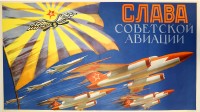
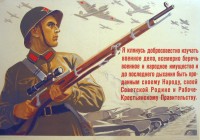
![PP 034: 1916, 1917, 1918… [years indicating the increasing numbers of deserters] – What used to happen to deserters. Breaking the vicious circle. [Partial translation]](https://www.posterplakat.com/thumbs/the-collection/posters/pp-034/pp034-200x263.jpg)
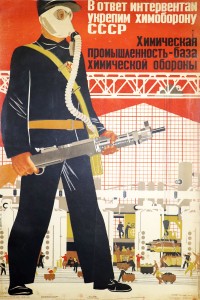
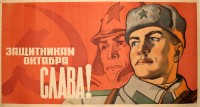
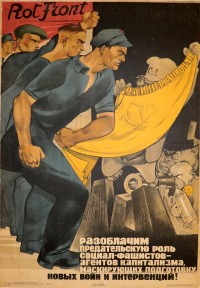
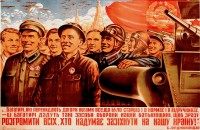
![PP 066: The Red Army -- The Pride of the Nation!
We stand for peace and we defend…
But we are not afraid of threats… [illegible text follows]](https://www.posterplakat.com/thumbs/the-collection/posters/pp-066/pp066-200x134.jpg)
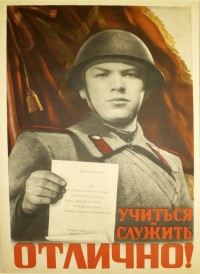
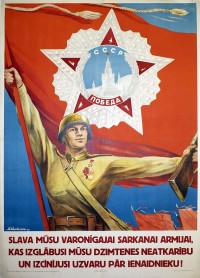
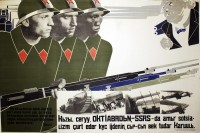
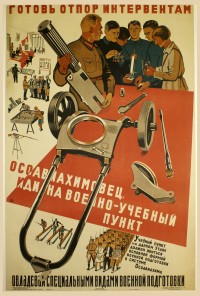
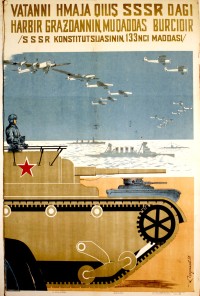
![PP 161: Our candidate for deputy in the Supreme Soviet of the Uzbek Soviet Socialist Republic -- Klement Yefremovich Voroshilov.
Lenin election district, Samarkand [Uzbekistan].](https://www.posterplakat.com/thumbs/the-collection/posters/pp-161/pp161-200x300.jpg)
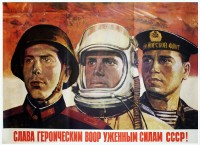
![PP 263: Let us strengthen the defense of the maritime borders of the USSR.
Buy OSVOD [All Russian Society of Naval Safety] lottery tickets!
Increase the power of the soviet fleet!](https://www.posterplakat.com/thumbs/the-collection/posters/pp-263/pp263-200x300.jpg)
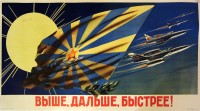
![PP 279: United in peace and war.
[Partial translation]](https://www.posterplakat.com/thumbs/the-collection/posters/pp-279/pp279-200x133.jpg)
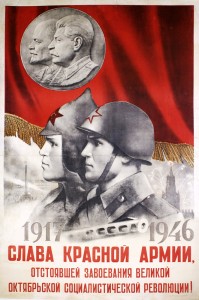
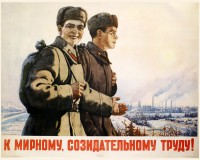
![PP 324: The Red Army is the Faithful Guard of the Country of Soviets.
[Upper right corner] Osoaviakhim - Support of Peaceful Labor and Defense of the USSR.](https://www.posterplakat.com/thumbs/the-collection/posters/pp-324/pp324-200x276.jpg)
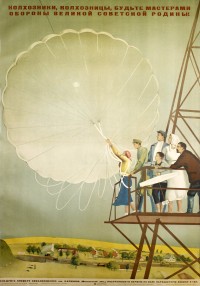
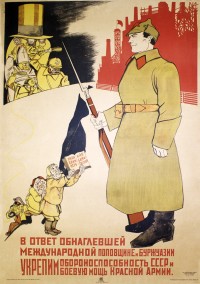
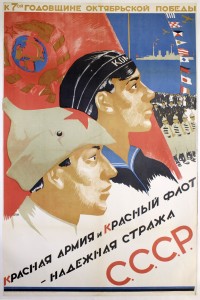
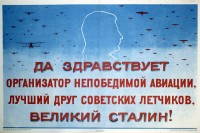
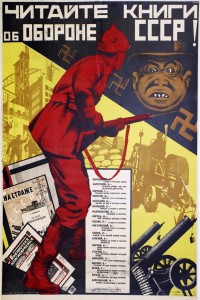
![PP 376: The People’s Army is invincible: Its creator- [is] Lenin.](https://www.posterplakat.com/thumbs/the-collection/posters/pp-376/pp376-200x109.jpg)
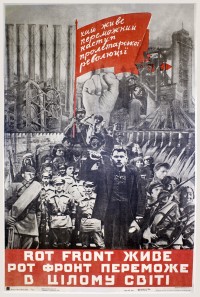
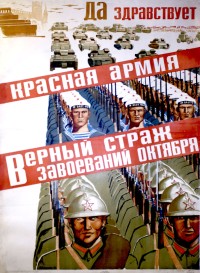
![PP 444: [Top margin left]
D.V.R. (Far Eastern Republic)
[Top margin right]](https://www.posterplakat.com/thumbs/the-collection/posters/pp-444/pp444-200x300.jpg)
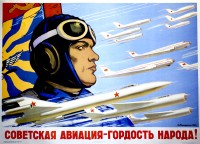
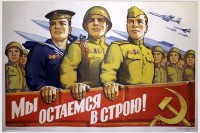
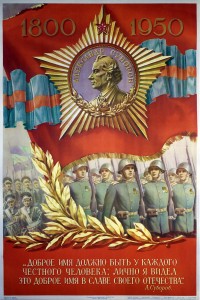
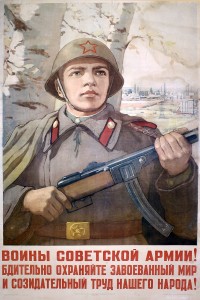
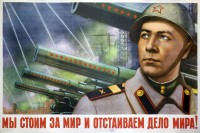
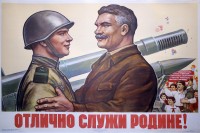
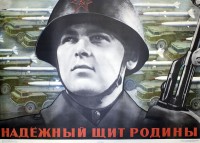
![PP 540: Long Live the Proud Falcons of our Motherland, Stalin’s charges, brave Soviet pilots, who do not know any barrier in the course of meeting an established goal! [Partial translation]](https://www.posterplakat.com/thumbs/the-collection/posters/pp-540/pp540-200x142.jpg)
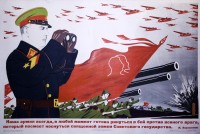
![PP 542: March forward, Komsomol generation,
joke and sing so that a smile will bloom!
We overcome space and time,
We – who are the young owners of the earth.
[Partial translation]](https://www.posterplakat.com/thumbs/the-collection/posters/pp-542/pp542-200x133.jpg)
![PP 571: [Text at bottom]
We are strengthening our defense...
with the holy love of the motherland-
Whoever dares to touch us,
has himself to blame!
[Partial translation]](https://www.posterplakat.com/thumbs/the-collection/posters/pp-571/pp571-200x297.jpg)
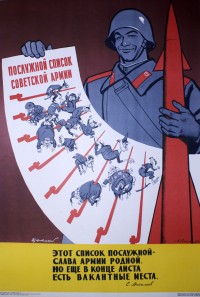
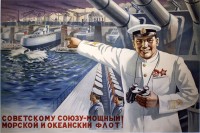
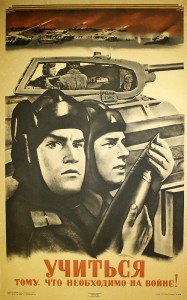
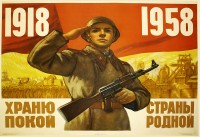
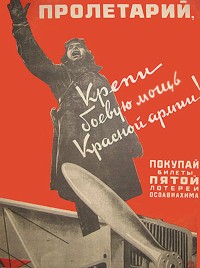
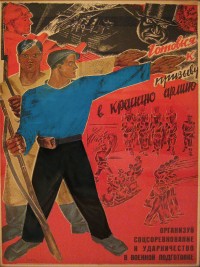
![PP 663: Long live the Red Army, the keen-eyed watchman of Soviet borders. Strengthen the defense of the USSR!
The intervention of 1918 and 1919:
Kornilov [White Army General]
Kaledin [Kossack Commander]
Krasnov [White Army Cavalry General]
[Partial translation]](https://www.posterplakat.com/thumbs/the-collection/posters/pp-663/pp663-200x280.jpg)
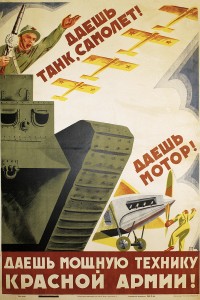
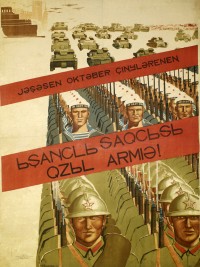
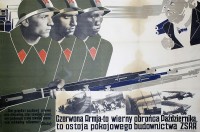
![PP 716: The Great Military Maneuvers of the R.K.K.A.
Kiev 1928.
[Quote at bottom] “Let every worker learn from the experience of the Great Military Maneuvers how to protect the country which is building Socialism --Voroshilov.](https://www.posterplakat.com/thumbs/the-collection/posters/pp-716/pp716-200x156.jpg)
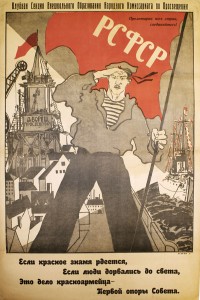
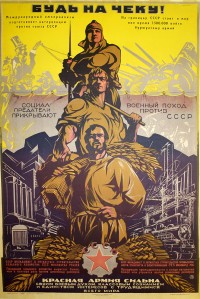
![PP 756: Holiday of the anniversary of the Red Army. February 23, 1919.
Day of the Red Gift. Believe! Believe victoriously and joyfully in the celebration of the red feast! And you will enter the promised, radiant door of a new world. [Partial translation]](https://www.posterplakat.com/thumbs/the-collection/posters/pp-756/pp-756-catalog-image-200x300.jpg)
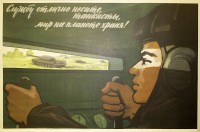
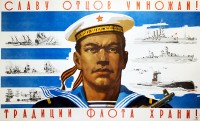
![PP 789: Maintenance, cleaning and disassembly of the 1891 issue rifle. [Partial translation]](https://www.posterplakat.com/thumbs/the-collection/posters/pp-789/pp-789-catalog-image-200x133.jpg)
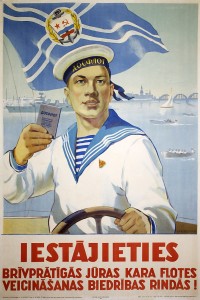
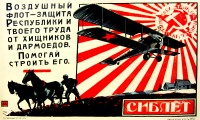
![PP 831: 1917 [Red Guard member striking a priest, a throne, and other symbols of Tsarist order]
1918–1922 [Red Army soldier driving off figures representing the Germans, the Whites, and the Entente interventionists]
1941–1945 [Red Army soldier attacking Mussolini, Hitler, and a Japanese officer]
[Final frame has no date but represents a modern Soviet soldier and military technology for deterring western militarism]](https://www.posterplakat.com/thumbs/the-collection/posters/pp-831/pp-831-catalog-image-200x100.jpg)

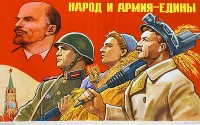
![PP 851: What working Moscow has done during the week of the Red Army soldier.
All attention to the details of Red Army life!
[Partial translation]](https://www.posterplakat.com/thumbs/the-collection/posters/pp-851/pp851-200x300.jpg)
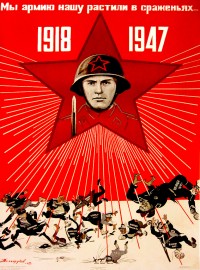
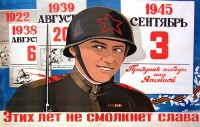
![PP 894: Be worthy of [your] fathers!
Never forget the exploits of Soviet soldiers, achieved by them during the Patriotic War.](https://www.posterplakat.com/thumbs/the-collection/posters/pp-894/pp-894-catalog-image-156x300.jpg)
![PP 916: [Left side] Universal Military Training, 1918 -- [Right side] Universal Military Training, 1919–1920](https://www.posterplakat.com/thumbs/the-collection/posters/pp-916/pp-916-catalog-image-200x124.jpg)
![PP 917: Heartfelt Greetings to the Heroes of the Sedov!
To Moscow, the Kremlin, Comrade Stalin,....[Partial translation]](https://www.posterplakat.com/thumbs/the-collection/posters/pp-917/pp-917-catalog-image-200x134.jpg)
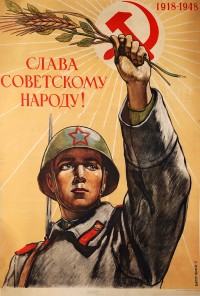
![PP 938: Bolshevik Greetings to the Loyal Defenders of the Socialist Motherland!
Long live our Red Army and the [Soviet] Navy!](https://www.posterplakat.com/thumbs/the-collection/posters/pp-938/pp-938-catalog-image-200x300.jpg)
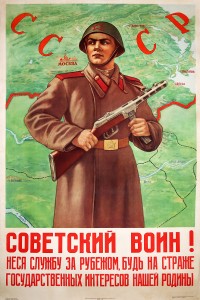

![PP 964: [Pending translation (Без Перевода)]
...[?] Science and the Peasant Red Army.](https://www.posterplakat.com/thumbs/the-collection/posters/pp-964/pp-964-catalog-image-200x278.jpg)
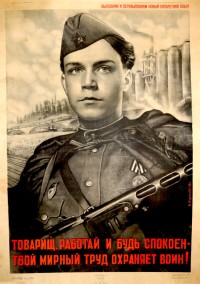
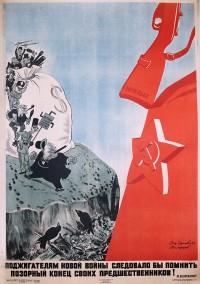
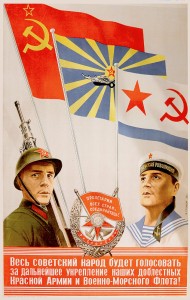
![PP 1008: Russian Communist Party, the tested leader of the laborers, has led and will lead the Red Army to Victories.
[Partial translation]](https://www.posterplakat.com/thumbs/the-collection/posters/pp-1008/pp1008-200x299.jpg)
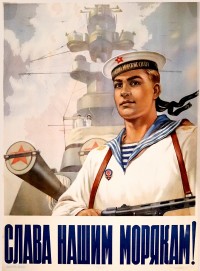
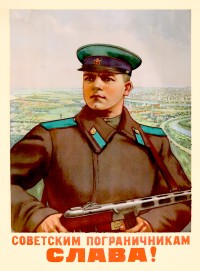
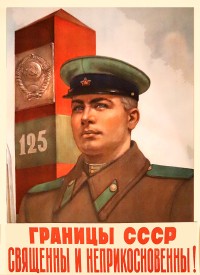
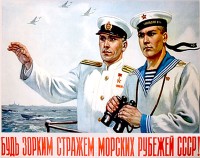
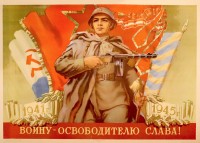
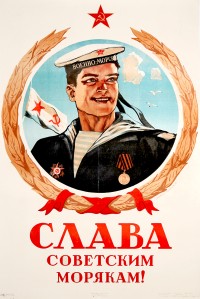
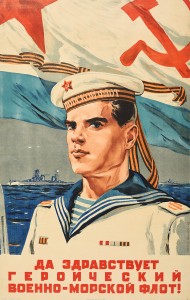
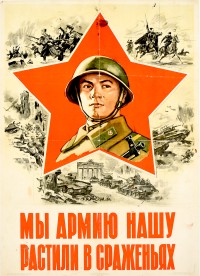
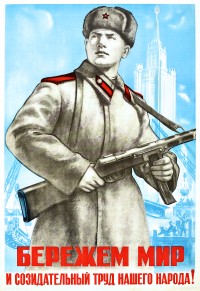
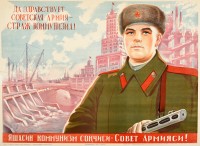
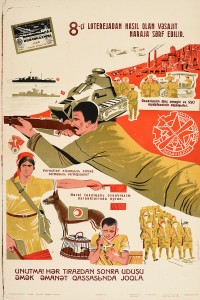
![PP 1119: Red Front [Partial translation]](https://www.posterplakat.com/thumbs/the-collection/posters/pp-1119/pp-1119-catalog-image-200x287.jpg)
